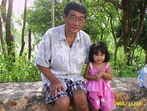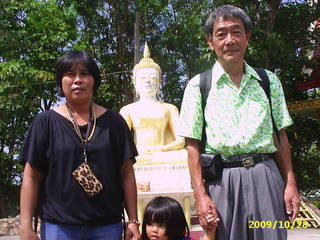2016年03月27日
伊方1号機廃炉 採算より40年ルールだ
March 26, 2016 (Mainichi Japan)
Editorial: 40-year reactor life rule must prevail over profitability
伊方1号機廃炉 採算より40年ルールだ
Shikoku Electric Power Co. has decided to decommission the No. 1 reactor at the Ikata nuclear power complex in Ehime Prefecture, as the reactor will have been in operation 40 years come September next year.
四国電力は、来年9月で運転開始からまる40年となる伊方原発1号機(愛媛県)の廃炉を決めた。
In the wake of the Fukushima No. 1 nuclear plant disaster, the government has set a new rule limiting the operational life of reactors to 40 years, in principle. An extension of up to 20 years can be granted by the Nuclear Regulation Authority (NRA). Ikata nuclear plant operator Shikoku Electric Power Co. had sought to have the No. 1 reactor's lifespan extended, but abandoned the idea after finding the enormous safety improvement costs would make it unprofitable to keep the reactor running.
東京電力福島第1原発事故後、政府は原発の運転期間を原則40年とする新ルールを定めた。原子力規制委員会の許認可を受ければ、最長で20年延長できる。四電は伊方1号機の運転延長を目指したが、多額の安全対策費が必要となるため、採算性がないと判断したという。
Reactor pressure vessels are said to deteriorate in 40 years due to being bombarded by neutrons. From the viewpoint of ensuring nuclear plant safety, reactors over 40 years of age need to be decommissioned, regardless of their profitability. It is hoped that Shikoku Electric's decision will set a precedent for other power companies.
40年は、圧力容器が中性子の照射を受けて劣化する目安とされる。原発の安全性確保の観点からは、採算性とは関係なく、廃炉にしていく必要がある。今回の四電の決定をルール定着につなげたい。
Five other reactors around the 40-year limit are already set to be decommissioned, including the No. 1 and 2 reactors at Kansai Electric Power Co.'s Mihama nuclear plant in Fukui Prefecture, and the No. 1 reactor at Kyushu Electric Power Co.'s Genkai nuclear station in Saga Prefecture -- decisions made in March last year. With the decommissioning of the Ikata plant's No. 1 reactor, the number of reactors in Japan will be reduced to 42.
運転開始から40年となる老朽原発を巡っては昨年3月、関西電力美浜1、2号機(福井県)や九州電力玄海原発1号機(佐賀県)など5基の廃炉が決まった。伊方1号機も廃炉になれば日本の原発は42基に減る。
The six reactors facing decommissioning are relatively small, with output in the 300,000 to 500,000 kilowatt range. More recent reactors can generate 1 million kilowatts each.
廃炉が決まった6基はいずれも出力が30万キロワット級から50万キロワット級で、100万キロワット級が主流となったその後の原発と比べると規模が小さい。
The decision over whether to decommission reactors is left up to each utility, and behind Kansai Electric and Kyushu Electric's decisions to decommission the aforementioned reactors also lay the issue of profitability. The smaller the output of a reactor is, the less profitable it is considering the massive cost of safety measures.
廃炉の判断は電力会社に任されており、四電以外の電力会社が廃炉に踏み切ったのも採算性の問題だ。規模が小さな原子炉では、多額の安全対策費をかけても、それに見合う発電電力量が得られないためだ。
Meanwhile, Kansai Electric has applied to the NRA to extend the service life of the No. 1 and 2 reactors at the Takahama nuclear plant, and the No. 3 reactor at the Mihama plant, both in Fukui Prefecture. The utility decided that those reactors -- which can each generate about 800,000 kilowatts -- will be profitable enough even with the immense safety costs.
一方、関電は、出力が80万キロワット級の高浜原発1、2号機と美浜3号機(いずれも福井県)の運転延長を規制委に申請中だ。安全対策費をかけても割に合うと判断したからだ。
However, aging reactors are fraught with more problems than deteriorating pressure vessels. The longer it has been since a reactor entered operation, the fewer engineers there are who can pass down legacy technologies. Some experts point out that there is a limit to how much the safety of elderly reactors can be improved because their design concept itself is outdated. The question of decommissioning a reactor and its output and economic efficiency should be considered separately.
しかし、老朽原発には、圧力容器の劣化以外にも問題がある。運転開始から時間がたつほど、古い技術の継承者はいなくなる。設計思想自体が古いため、安全性の向上には限界があるという指摘もある。廃炉の判断と原発の出力や経済性とは、切り離して考えるべきなのだ。
Furthermore, utilities face a host of other challenges to moving ahead with steady decommissioning.
廃炉を着実に進めるためには、その他にも課題が山積している。
First and foremost, the final disposal site for the colossal amount of radioactive waste that will be generated by dismantling reactors has yet to be decided. There are not even regulatory standards for disposing of the severely contaminated inner components of reactors.
まず、原発の解体で生じる大量の放射性廃棄物の最終処分先が決まっていない。原子炉内の部品など汚染が激しいものについては、処分のための規制基準すらまだない。
It is also imperative to secure storage locations for spent nuclear fuel generated by nuclear plants. Under the government's nuclear fuel cycle policy, spent fuel had been destined for the reprocessing plant in Rokkasho, Aomori Prefecture. However, the plant is under safety review by the NRA, and there is no prospect of it becoming operational anytime soon.
原発の使用済み核燃料を保管する場所の確保も重要だ。政府が掲げる核燃料サイクル路線に基づけば、最終的には青森県六ケ所村の再処理工場に運ばれる。だが、再処理工場は規制委の安全審査中で、稼働時期のめどは立っていない。
Power companies and the government need to overcome these challenges.
電力会社や政府は、こうした問題を克服していく必要がある。
Reactor decommissioning seriously affects regional economies and the finances of local governments dependent on nuclear plant hosting subsidies. 廃炉は、原発関連の交付金などに頼ってきた地元自治体の財政や地域経済にも大きく影響する。
The central government's support is indispensable in associating the decommissioning business with regional revitalization, among other measures.
廃炉ビジネスと地域振興を結びつけるなど、政府の支援も欠かせない。
Editorial: 40-year reactor life rule must prevail over profitability
伊方1号機廃炉 採算より40年ルールだ
Shikoku Electric Power Co. has decided to decommission the No. 1 reactor at the Ikata nuclear power complex in Ehime Prefecture, as the reactor will have been in operation 40 years come September next year.
四国電力は、来年9月で運転開始からまる40年となる伊方原発1号機(愛媛県)の廃炉を決めた。
In the wake of the Fukushima No. 1 nuclear plant disaster, the government has set a new rule limiting the operational life of reactors to 40 years, in principle. An extension of up to 20 years can be granted by the Nuclear Regulation Authority (NRA). Ikata nuclear plant operator Shikoku Electric Power Co. had sought to have the No. 1 reactor's lifespan extended, but abandoned the idea after finding the enormous safety improvement costs would make it unprofitable to keep the reactor running.
東京電力福島第1原発事故後、政府は原発の運転期間を原則40年とする新ルールを定めた。原子力規制委員会の許認可を受ければ、最長で20年延長できる。四電は伊方1号機の運転延長を目指したが、多額の安全対策費が必要となるため、採算性がないと判断したという。
Reactor pressure vessels are said to deteriorate in 40 years due to being bombarded by neutrons. From the viewpoint of ensuring nuclear plant safety, reactors over 40 years of age need to be decommissioned, regardless of their profitability. It is hoped that Shikoku Electric's decision will set a precedent for other power companies.
40年は、圧力容器が中性子の照射を受けて劣化する目安とされる。原発の安全性確保の観点からは、採算性とは関係なく、廃炉にしていく必要がある。今回の四電の決定をルール定着につなげたい。
Five other reactors around the 40-year limit are already set to be decommissioned, including the No. 1 and 2 reactors at Kansai Electric Power Co.'s Mihama nuclear plant in Fukui Prefecture, and the No. 1 reactor at Kyushu Electric Power Co.'s Genkai nuclear station in Saga Prefecture -- decisions made in March last year. With the decommissioning of the Ikata plant's No. 1 reactor, the number of reactors in Japan will be reduced to 42.
運転開始から40年となる老朽原発を巡っては昨年3月、関西電力美浜1、2号機(福井県)や九州電力玄海原発1号機(佐賀県)など5基の廃炉が決まった。伊方1号機も廃炉になれば日本の原発は42基に減る。
The six reactors facing decommissioning are relatively small, with output in the 300,000 to 500,000 kilowatt range. More recent reactors can generate 1 million kilowatts each.
廃炉が決まった6基はいずれも出力が30万キロワット級から50万キロワット級で、100万キロワット級が主流となったその後の原発と比べると規模が小さい。
The decision over whether to decommission reactors is left up to each utility, and behind Kansai Electric and Kyushu Electric's decisions to decommission the aforementioned reactors also lay the issue of profitability. The smaller the output of a reactor is, the less profitable it is considering the massive cost of safety measures.
廃炉の判断は電力会社に任されており、四電以外の電力会社が廃炉に踏み切ったのも採算性の問題だ。規模が小さな原子炉では、多額の安全対策費をかけても、それに見合う発電電力量が得られないためだ。
Meanwhile, Kansai Electric has applied to the NRA to extend the service life of the No. 1 and 2 reactors at the Takahama nuclear plant, and the No. 3 reactor at the Mihama plant, both in Fukui Prefecture. The utility decided that those reactors -- which can each generate about 800,000 kilowatts -- will be profitable enough even with the immense safety costs.
一方、関電は、出力が80万キロワット級の高浜原発1、2号機と美浜3号機(いずれも福井県)の運転延長を規制委に申請中だ。安全対策費をかけても割に合うと判断したからだ。
However, aging reactors are fraught with more problems than deteriorating pressure vessels. The longer it has been since a reactor entered operation, the fewer engineers there are who can pass down legacy technologies. Some experts point out that there is a limit to how much the safety of elderly reactors can be improved because their design concept itself is outdated. The question of decommissioning a reactor and its output and economic efficiency should be considered separately.
しかし、老朽原発には、圧力容器の劣化以外にも問題がある。運転開始から時間がたつほど、古い技術の継承者はいなくなる。設計思想自体が古いため、安全性の向上には限界があるという指摘もある。廃炉の判断と原発の出力や経済性とは、切り離して考えるべきなのだ。
Furthermore, utilities face a host of other challenges to moving ahead with steady decommissioning.
廃炉を着実に進めるためには、その他にも課題が山積している。
First and foremost, the final disposal site for the colossal amount of radioactive waste that will be generated by dismantling reactors has yet to be decided. There are not even regulatory standards for disposing of the severely contaminated inner components of reactors.
まず、原発の解体で生じる大量の放射性廃棄物の最終処分先が決まっていない。原子炉内の部品など汚染が激しいものについては、処分のための規制基準すらまだない。
It is also imperative to secure storage locations for spent nuclear fuel generated by nuclear plants. Under the government's nuclear fuel cycle policy, spent fuel had been destined for the reprocessing plant in Rokkasho, Aomori Prefecture. However, the plant is under safety review by the NRA, and there is no prospect of it becoming operational anytime soon.
原発の使用済み核燃料を保管する場所の確保も重要だ。政府が掲げる核燃料サイクル路線に基づけば、最終的には青森県六ケ所村の再処理工場に運ばれる。だが、再処理工場は規制委の安全審査中で、稼働時期のめどは立っていない。
Power companies and the government need to overcome these challenges.
電力会社や政府は、こうした問題を克服していく必要がある。
Reactor decommissioning seriously affects regional economies and the finances of local governments dependent on nuclear plant hosting subsidies. 廃炉は、原発関連の交付金などに頼ってきた地元自治体の財政や地域経済にも大きく影響する。
The central government's support is indispensable in associating the decommissioning business with regional revitalization, among other measures.
廃炉ビジネスと地域振興を結びつけるなど、政府の支援も欠かせない。
【このカテゴリーの最新記事】
-
no image
-
no image
-
no image
-
no image
-
no image
この記事へのコメント
コメントを書く





